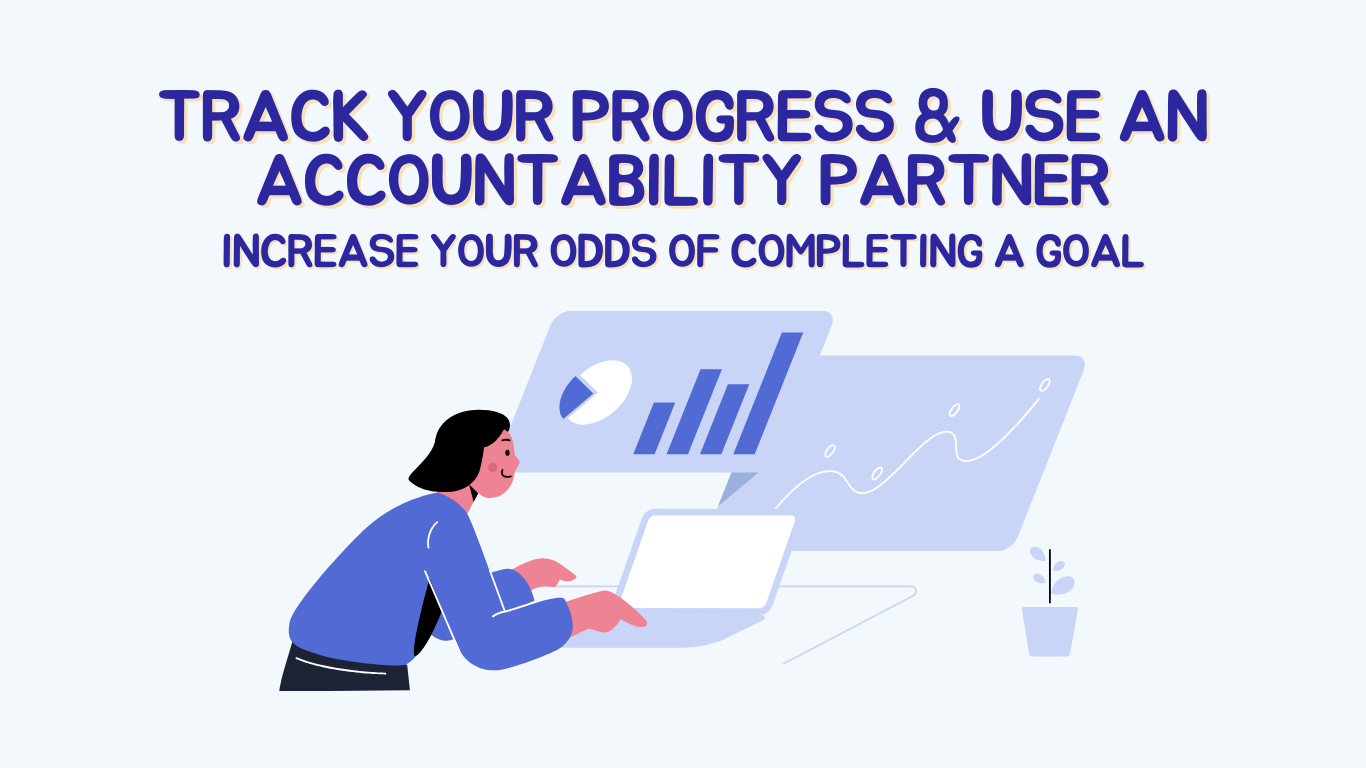Breakdown of Scientific Meta-Analysis: Does Monitoring Goal Progress Promote Goal Attainment? A Meta-Analysis of the Experimental Evidence
Want to increase your chances of completing a goal? In Harkin’s and colleagues’ scientific meta-analysis, the researchers reviewed over 100 different studies involving nearly 20,000 participants. They found that the odds of achieving one’s goal increased dramatically when individuals wrote down their goal progress and reported it to someone else.
In this article, we will:

The Findings
What did the researchers want to know? In Harkin’s and colleagues’ scientific meta-analysis, the researchers wanted to learn whether consistently reporting one’s progress increased an individual’s ability to achieve their goal. In order to do this, they looked at past studies to determine whether progress monitoring; like having a journal, phone application, pedometer, or person to report progress to; increased the odds of accomplishing a goal. First, they combed through 22,054 prior studies.
From these studies, the researchers carefully picked every study that:
A total of 138 studies fit this criteria, and in these selected studies, 19,951 people participated.
The researchers defined different variables to consider and factor in, including whether the progress was physically recorded, whether the progress was eyeballed or accurately measured, and whether the progress was self-reported or reported to either a group or a single individual. They discovered that many factors improved the likelihood that a participant would achieve their goal.
For example, they found that in the studies where participants were required to record their progress, their outcomes improved by 85%. While monitoring an individual’s progress privately improved the likelihood of goal attainment by 19%, reporting their progress publicly to a group or to a single individual actually increased that likelihood even further to a whopping 55% for a group or 47% to an individual. Physically writing down progress also improved the likelihood of achieving a goal by 43%, while not writing down their progress only improved the likelihood of achieving a goal by 29%. When the goal was measured objectively by using tools like a pedometer or a blood pressure monitor, results improved to 57% versus 23% when simply eyeballing results.

Steps to Implement these Finding into Your Life
The study suggests that if you want to improve your chances of achieving a goal, then you should:

Set a Goal and Make a Plan
In the meta-analysis, they found that people were more likely to increase their odds of success if they were to perform other goal achievement methods like goal setting and planning.
If you want to increase your odds even further, be clear on what you want to achieve and set a quantifiable goal that can be easily measured. Figure out where you are compared to that goal. From there, create a plan to achieve your goal and set milestones to get there. Periodically, re-evaluate where you are and how close you are to your goal. The act of highlighting where you are compared to the goal state helps an individual get closer to succeeding at their goal.
In order for you to apply this to your current goal journey, you need to first figure out where you stand in terms of your goal and where you want to be. For example, if you want to increase your bench press strength, it’s important to know how much you currently are able to lift and how much you want to lift. If you want to learn a language, you could select a language test to gauge your initial ability or level, and then select what level or score you would like to reach. Whatever it is, it’s best to figure out some way to measure where you are and the progress that you make as you proceed.

Monitor and Write Down Your Progress
Once you know what you want to accomplish, you need to figure out how you’re going to measure progress. The study discusses two different ways to measure progress: behavior-based measurements where an individual reports performing a specific behavior and outcome-based measurements where an individual measures their current status against the desired outcome. They found that behavior-based recordings, like seeing if one was successful at their workouts, helped people stick to those particular behaviors but didn’t always contribute to an overall improvement in their outcomes. On the other hand, when the progress recorded was related to the outcome, it increased the likelihood of the outcome being achieved.
What exactly does this mean for you?
Well, it depends on what your particular goal is.
Do you want to lose weight or get healthier?
For example, you might want to lose weight, but you’re only recording how often you go to the gym. You might get more consistent at going to the gym, but you might not actually lose weight. It’s better to record your weight instead. If on the other hand, your goal is to develop healthy habits, you might consider creating behavior based measurements like recording how many days you’re able to get physical activity in or counting how many meals you’re able to add vegetables to.
Do you want to have a profitable business?
Another example is if your goal is to have a profitable business, it might be good to create a goal of reaching out to a certain number of prospects every day to build that habit. Inadvertently, you might find more prospects. On the other hand, you might not improve your process. An outcome-based goal might be to increase sales in general or increase the number of prospects converted to customers.
Do you want to improve your skills?
If your goal is to get better at a sport, you might measure how many days per week you practiced that particular sport; however, a better goal might be to record an outcome-based goal. For basketball, this could be how many shots you’re able to make. For baseball, you might go to the batting cages and mark how many hits you’re able to hit. For football, you might mark how fast you’re able to run between goal posts.
Do you want to finish a passion project?
If your goal is to complete a project, you might measure how many minutes you’ve spent on that project if you want to build a habit, or you could measure how much of that project was completed. For example, if you want to write a novel, it might be better to mark how many words or pages you were able to write per day versus how long you wrote for.
Whatever form of measurement you choose, just be sure that the measurement is measuring something that will help contribute to your overall success, and be sure to write down that progress to maximize your chances of success.

Report Regular Progress
If you want to increase your odds that you’ll make progress towards a goal, the best way for you to do so is to report your progress to a different person. You can announce your progress through social media or join groups through Facebook, Reddit, or Discord to help you better report your progress. If you’re not willing to boldly announce your goals on social media, you could also find an accountability partner or coach who can help improve your chances of follow-through.
Be sure that you receive immediate feedback when turning in your progress. Immediate feedback or being able to see your progress right after recording it was much more effective than receiving delayed feedback when a measurement was taken and then progress was not shown until after a few days.

Limitations of the Study
While the study did provide evidence to suggest that regularly monitoring progress leads to goal achievement, they did mention some limitations to their studies.
Types of Studies
Out of the 138 studies reviewed, they were able to identify only one of those studies as a study related to something that was not health related. Most studies dealt with some kind of health outcome, like decreasing blood pressure, decreasing blood sugar, or losing weight.
Of the studies that were done, it was discovered that for certain health-related outcomes, there was a medium to large increase of people who were successful. This is compared to people who were trying to change their diet or lose weight, which saw a small to medium chance of success.
Few studies also showed a negative relationship between outcomes versus progress recording. One of those studies included measuring one’s time in the sun to decrease UV exposure. In this study, they found that results actually showed the opposite effect.
What does this mean?
While progress monitoring can help with many different goals, particularly health-related ones, the evidence related to non-health-related goals is still not completely clear. More evidence is required to better understand the relationship of non-health-related goals. Depending on what kind of goal you have, it can determine how much goal monitoring can actually improve your outcomes, and in certain goals, recording your progress can actually result in a negative outcome.

Conclusion
To maximize your chances of success across various goals, regularly tracking your progress and recording it is crucial. Monitoring both behaviors and outcomes improves not only your ability to stay on track but also your chances of achieving better results. Sharing your progress with others adds an extra layer of accountability, further boosting success.
While there are many paths to success, the most effective strategies consistently include setting clear goals, measuring progress along the way, and relying on a support system to help you stay committed and adjust as needed.
Ready to Turn Progress into Results?
Tracking is powerful, but accountability supercharges it. Let one of our accountability coaches help you stay consistent and motivated.

